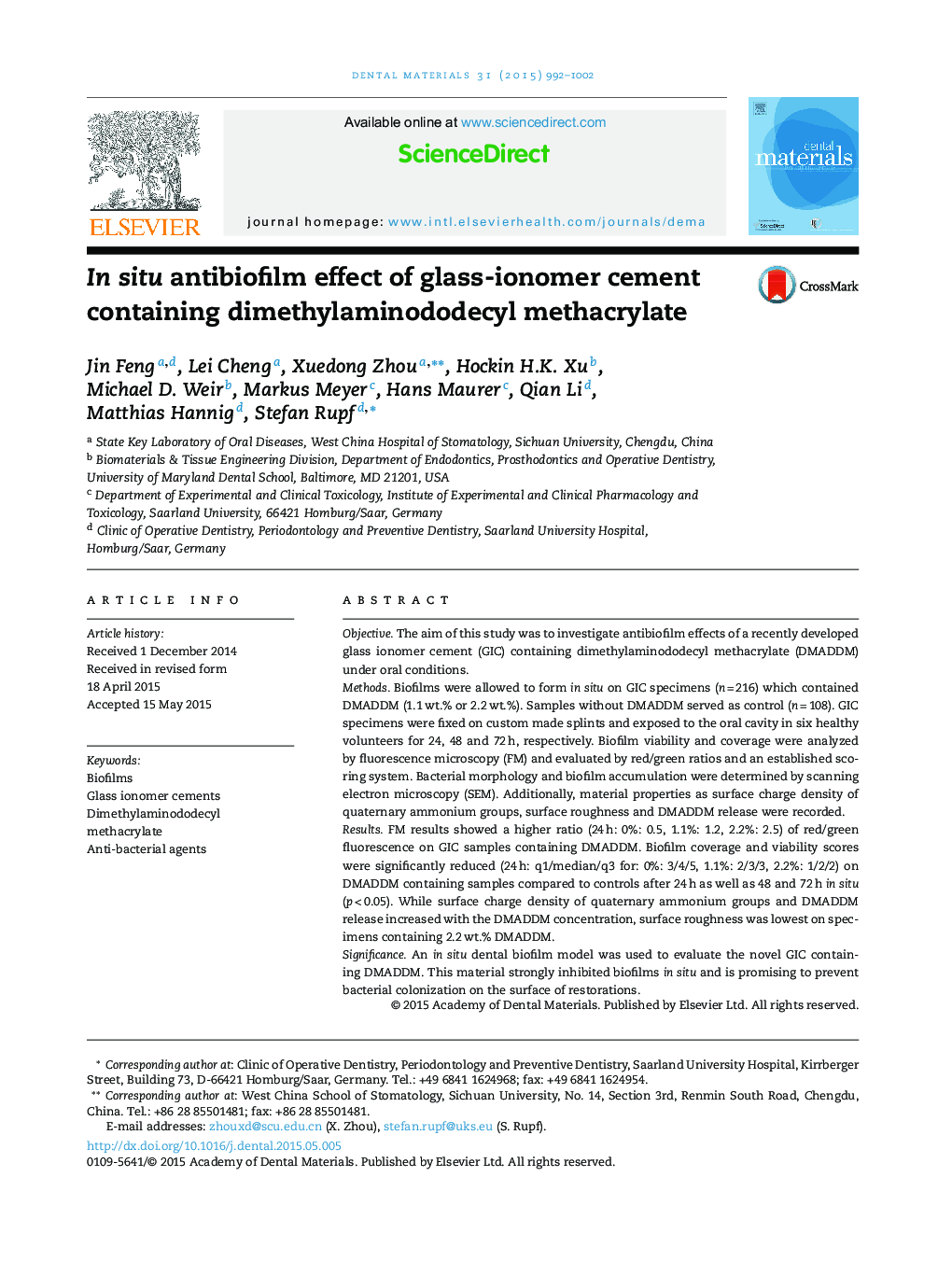| Article ID | Journal | Published Year | Pages | File Type |
|---|---|---|---|---|
| 1420560 | Dental Materials | 2015 | 11 Pages |
•An in situ dental biofilm model was used to evaluate the novel glass ionomer cement (GIC) containing dimethylaminododecyl methacrylate (DMADDM).•DMADDM could increase surface charge density but reduce surface roughness.•The biofilm coverage and viability were significantly reduced on DMADDM containing samples compared to controls.
ObjectiveThe aim of this study was to investigate antibiofilm effects of a recently developed glass ionomer cement (GIC) containing dimethylaminododecyl methacrylate (DMADDM) under oral conditions.MethodsBiofilms were allowed to form in situ on GIC specimens (n = 216) which contained DMADDM (1.1 wt.% or 2.2 wt.%). Samples without DMADDM served as control (n = 108). GIC specimens were fixed on custom made splints and exposed to the oral cavity in six healthy volunteers for 24, 48 and 72 h, respectively. Biofilm viability and coverage were analyzed by fluorescence microscopy (FM) and evaluated by red/green ratios and an established scoring system. Bacterial morphology and biofilm accumulation were determined by scanning electron microscopy (SEM). Additionally, material properties as surface charge density of quaternary ammonium groups, surface roughness and DMADDM release were recorded.ResultsFM results showed a higher ratio (24 h: 0%: 0.5, 1.1%: 1.2, 2.2%: 2.5) of red/green fluorescence on GIC samples containing DMADDM. Biofilm coverage and viability scores were significantly reduced (24 h: q1/median/q3 for: 0%: 3/4/5, 1.1%: 2/3/3, 2.2%: 1/2/2) on DMADDM containing samples compared to controls after 24 h as well as 48 and 72 h in situ (p < 0.05). While surface charge density of quaternary ammonium groups and DMADDM release increased with the DMADDM concentration, surface roughness was lowest on specimens containing 2.2 wt.% DMADDM.SignificanceAn in situ dental biofilm model was used to evaluate the novel GIC containing DMADDM. This material strongly inhibited biofilms in situ and is promising to prevent bacterial colonization on the surface of restorations.
